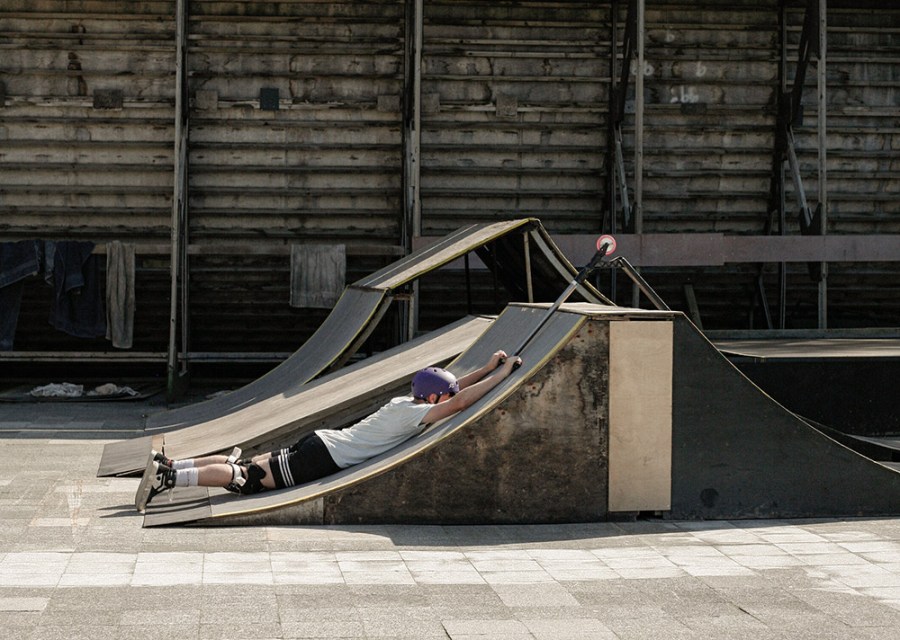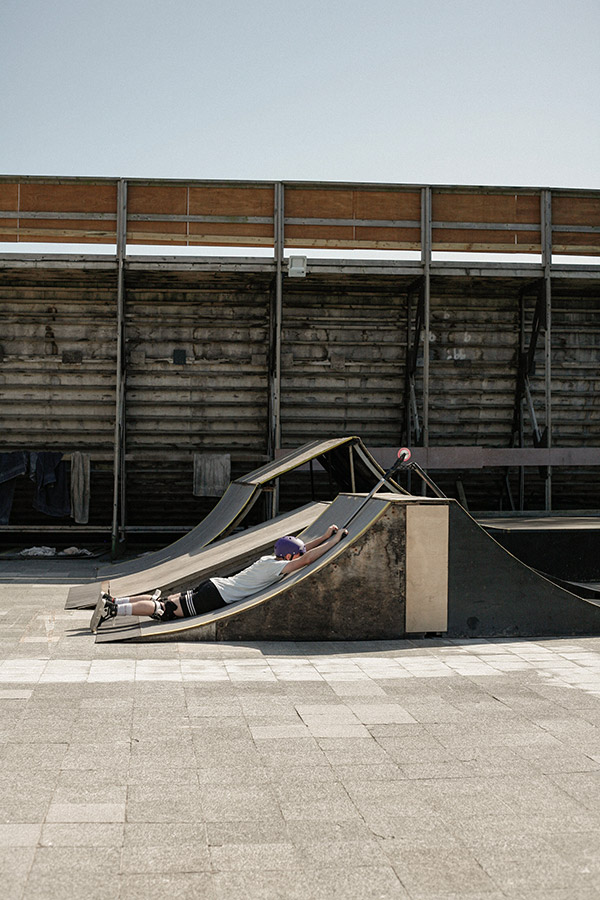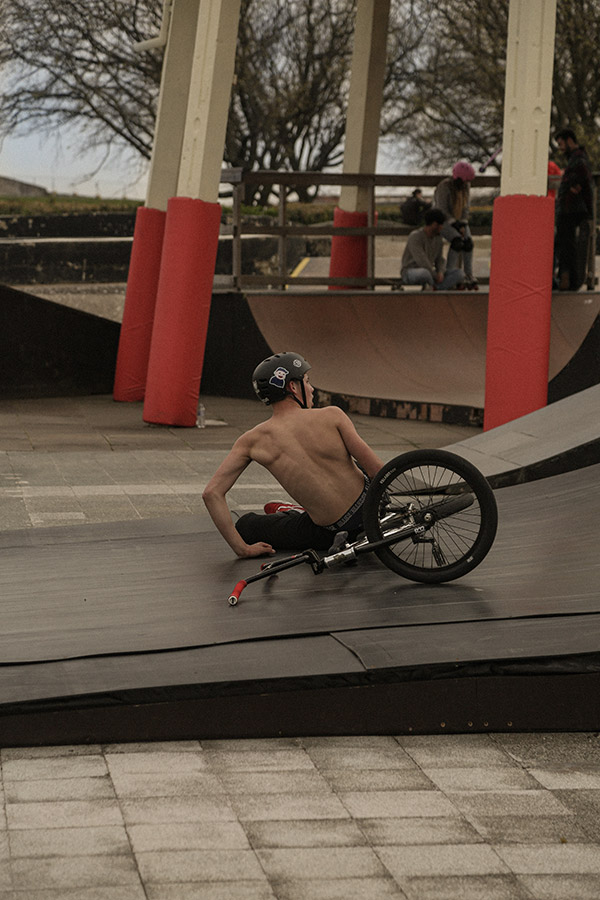Jessica Miller visits Middleman, the degree show by Final year BA (Hons) Photography students from the University of Portsmouth. The students share more about their projects and advice for those looking to get into photography.
This year, we are visiting some of the undergraduate and postgraduate shows around the country to take a look at and celebrate the work of a new generation of photographers. In June, I visited University of Portsmouth’s BA (Hons) Photography degree show, Middleman, on show at the university campus and later shown as part of the Free Range Shows at Truman Brewery in London.
This group of students share practices ranging in concepts and creative interests. With projects exploring life as a deaf person using British Sign Language, to the properties of materials and the conservation of insects through a range of photographic processes.
I spoke with some of the University of Portsmouth photography students about their work, inspirations and future plans as they conclude their studies:
Ellie-Mae Burnside – Oneness of Concrete
Fujifilm GFX50S, 120mm f/4 macro lens
Can you tell me about yourself and your project?
I live and work in Portsmouth, on the south coast of England. I’m a visual artist and researcher whose photographic practice reflects interests of sculpture, material and design. However, with the influence of research, my practice offers a different perspective on architecture, in an attempt to dissociate associations and assumptions one may have of the thing itself.
My practice explores connections between man and matter, either through the construction or the material in its wholeness. Specifically concrete and the philosophy behind the material’s existence, wholeness and properties. As well as, how handling a material allows one to understand its limitations and potential through the process of experimentation and interrogation.
The concept behind my work was to investigate concrete as a thing-of-itself. A material that often goes overlooked, it is a symbol of the underclass, often referenced to crime. Concrete is transformative with beneficial properties such as durability and versatility– being able to manipulate other materials. I wanted to strip the material from its original purpose (in dams, buildings, roads) and assign it with a new function (testing against other materials/balancing). For me it’s about challenging what art is/ the tradition of sculpture and how it is perceived.
When photographing materials, I simply showed them in a raw unaltered manner. We judge the object by appearance, which relates back to Carl Andre’s ‘Equivalent VIII’ whose work was not deemed as art due to the use of ‘ready- made’ objects and Duchamp argued this. The objects I photograph are a thing (collectively) but are a part of something much larger. Yes, it is a concrete block, but this concrete block has been stripped from its larger functionality which we overlook.
The geometric forms within Oneness of Concrete present a dialogue with Western minimalist sculpture by artists including Alexander Calder, Anthony Caro and Carl Andre. The sculpture artists have influenced my choice in formation/placement and aesthetical qualities of the work, plus incorporating other materials and testing the boundaries of sculpture.
I was also influenced by Peter Fischli and David Weiss who photographed household objects arranged to form balanced assemblages, and how these objects were dependent on one another and the space they are situated within.
The process of my work relied heavily on the incorporation of materials and documenting my process of experimentation. I revisited and built upon certain areas of my process by experimenting with new backdrops and various ways of replicating form through placement. The assemblages do not simply look temporary; once photographed, they were disassembled and today these photographs are the only record of their existence. The outcomes reflect emphasis on the physicality of time – signifying a moment in time, they become a document/record of what I have created.
How did you choose which photographs would be included in your show?
It’s almost impossible to choose the first photograph straight off the bat so it involved myself revisiting, editing, and placing photographs in sequences to see what worked and what didn’t. Experimenting is important, an important way of acting as a visual aid so we can understand physically what is and is not working. I shortlisted, pulled out the photographs I didn’t feel a connection with in terms of their composition/framing and approach.
Importantly, it is really good to get advice/feedback from someone else and see from an alternative perspective. The final photographs presented within the show are coherent but focus on placement/form and what materials are being incorporated so I was really concerned with each photograph having their own set of qualities but still linked as a series.
The outcome consisted of a triptych – three A3 MDF mounted C-Type prints. C-Type matte paper was decided because it complements the nature of the prints and it slightly lightens the photographs.
What are your future plans?
My career aspirations is to be a Freelance Architectural Photographer working with established architectural companies e.g., Norm Architects, MG Architects, Felix Lewis Architects. Also, editorial magazines such as Dezeen, Architectural Digest, Wallpaper* and Cereal Magazine. A possible avenue also when working with various architectural/design companies would be with L.Ercolani – a design/furniture company in England who specialize in products featured in contemporary interiors which for myself is an avenue I am very much interested in (the spaces and what is situated within them).
I am fully aware that the work/sector I will be going into is very much commercial/advertisement based showcasing these interior/exterior spaces. Potentially in the future I wish to study a MA in Sculpture at the Royal College of Art to articulate more on the physical-art, process and materials in relevance to the wider social and environmental concerns.
Do you have any advice for others wanting to get into or study photography?
- Go for it! It actually doesn’t matter what camera you have, it’s how you use it. I have such an old camera but that doesn’t stop me from creating! Be creative, ambitious, take every single opportunity you get as they don’t always come around often!
- Get a portfolio together, go apply for volunteer work, do things for free and build up that exposure! One thing for sure is to not follow trends, read up about art – even go visit some at galleries to inspire you.
- Try things out and then see what happens! Keep posting about the work you create, connect with people on social media, it’s important.
Shalom Nuhu – Signs of Silence
Can you tell me about yourself and your project?
I was born profoundly deaf, and I am a cochlear implant user. I’m interested in art, fashion design and photography.
As a deaf woman, Signs of Silence explores hand gestures and facial expressions I make when signing British Sign Language (BSL). The gestures I use to express myself become shape, texture, movement, an art form. The self-portraits were exhibited alongside a video depicting how I react to sound and silence as a deaf person, with and without my cochlear implant.
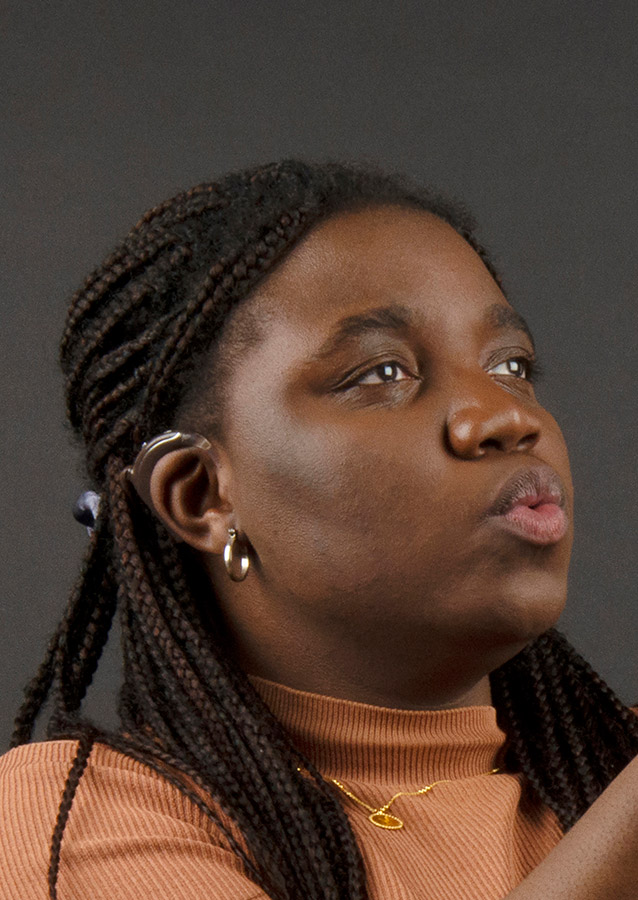
At first, I wasn’t sure what I wanted for my major project until I decided to choose deafness. I wanted to share my deafness experience. I wanted to show an understanding of what it is being deaf in the hearing world like. I included BSL because it’s important to understand using BSL is for communicating and not to be afraid to communicate with deaf people in a different method.
How did you choose which photographs would be included in your show?
I had many photographs, so I wanted to reduce them to 6 because I wanted to focus on the facial expression and hand signs which relate to British Sign Language. I included the film as well because I wanted the audience to experience my deafness in my shoes.

What are your future plans?
After graduating, I’m planning to study Masters. I have applied for photography, fashion photography and fashion & textiles at different universities. Then after completing the master’s, I’m planning to travel.
Do you have any advice for others wanting to get into or study photography?
- Don’t give up, keep trying no matter what.
- Prove them wrong
- Believe in yourself.
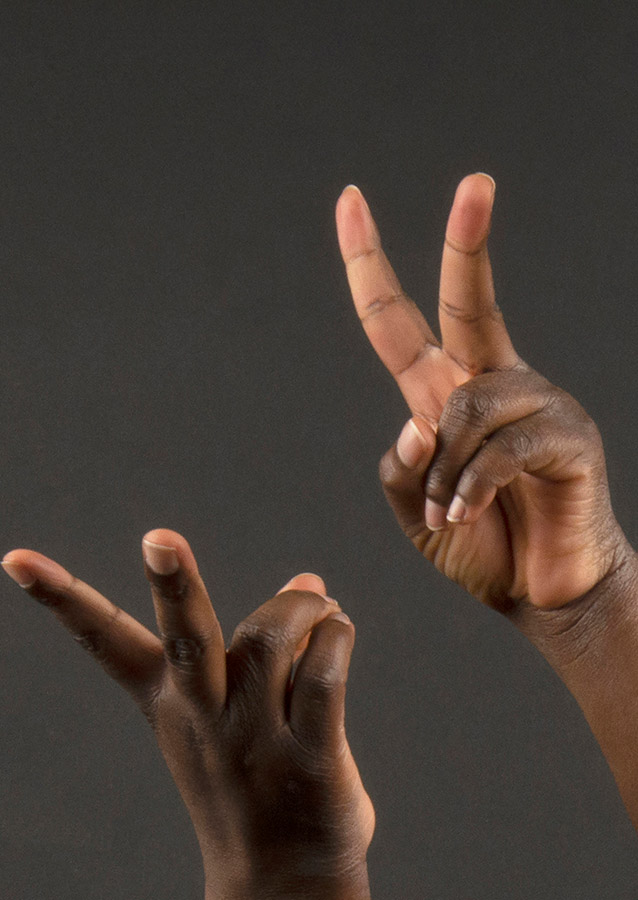
Anais Parr – Tales of the Unmade
Canon EOS 5D MK III and a 50 mm lens
Can you tell me about yourself and your project?
I am a 21 year old who has studied photography since I was 16 but since my dad gave me my first camera I was always taking photos. My interest in the subject of my images has often swayed but at the start of the year I was feeling like an imposter in my practice and wasn’t enjoying the outcome of any of my work. I decided to take some time out of the current project I was working on for university and approach strangers and take photos unplanned.
This led to me working with some skater friends to take some shots of them, I found myself telling the skaters that it didn’t matter if they landed their tricks because I was looking for the in-air shot. However, the photo is proof of the landing for them, so this part was important to them. I’d spend ages at a time watching the repetition of the same trick and would watch them fall down, just to get straight back up. This idea led to Tales of the unmade.
How did you choose which photographs would be included in your show?
When it came to choosing the set up of my exhibition I chose my images in pairs, this led to creating a collage style for my exhibition. I didn’t want to overwhelm and include too many images in the installation so I chose my favourites. The one that told the narrative.
What are your future plans?
Regarding my future plans, I will like to continue to work with photographing recreational sports in my own way and hopefully create content for magazines like the zine I created.
Thais Verhasselt – Touch Me with your Eyes
Can you tell me about yourself and your project?
I am a French multidisciplinary artist, photographer, creative producer, and educator based in Portsmouth, UK. With a broad range of experience in project management and youth leadership, I mainly specialise in organising the end-to-end production of collaborative projects. My personal projects explore themes such as identity construction, visual perception, and memory.
Initially, I was captivated by the idea that two pictures taken from a slightly different angle could converge into a single three-dimensional image. In this series, the medium expresses that different perspectives must be considered to bring out the depth of a situation. 3D imagery is a closer representation of how our vision operates – a more real recollection of the ‘events’ per se.

My research developed from the moment I read intensively about optical illusions, perceptive tricks, and how our vision operates. Few references such as the Concepts and Mechanisms of Perception (1974) by Richard Gregory, the London Stereoscopic Society, and the contemporary stereo work of Natsumi Hayashi and Colleen Woolpert were decisive in the choice I made to continue through on this project.
Touch me with your eyes is a multimedia project based on Jane’s cancer diagnosis. Jane is my mother’s childhood friend who I used to live in London. In late 2021, she was diagnosed with stomach cancer. The project is based on 3D portraits and handwritten journal excerpts and aims to provide both introvert and extrovert outlooks, and therefore two different perspectives of the same event.
This immersive work encourages the viewers to use diverse perceptive senses to observe and examine the photographs in a quasi-scientific manner. The title is an analogy for suppressing the tactile element; touching a person with a weak immune system must be done meticulously and with care.
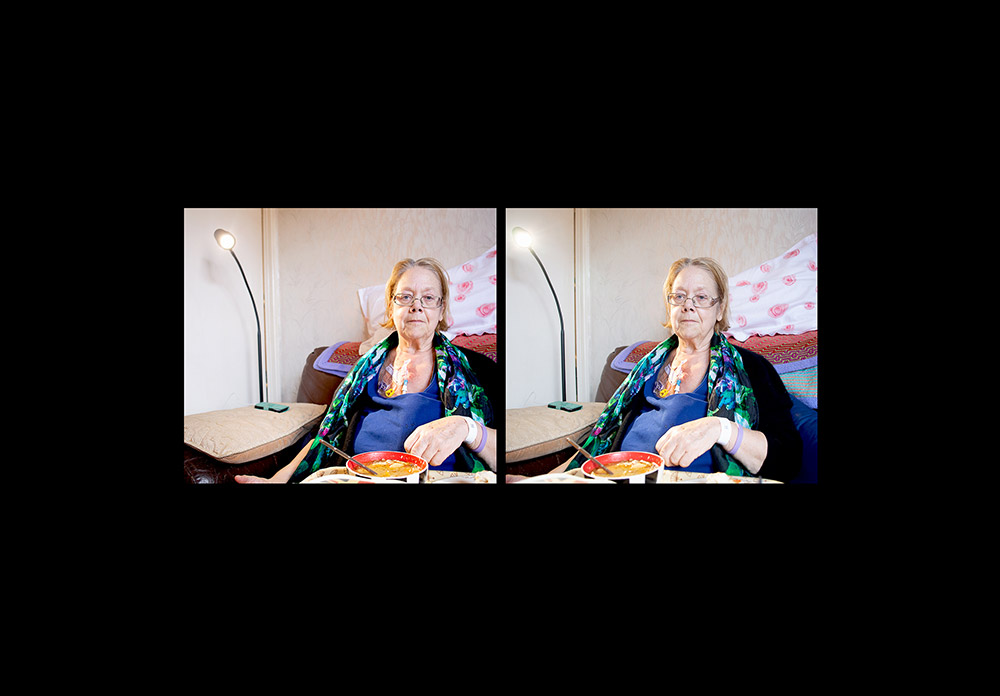
How did you go about taking your photographs?
To capture the stereographs, I used two Canon EOS 6D DSLR cameras both equipped with EF 24mm f2.8 lenses. I mounted the two cameras as closed to each other as possible on a wooden plank. When taking stereo images I needed to ensure the two cameras were set with the exact same settings. I then used a remote control to release both cameras’ shutters simultaneously.
How did you choose which photographs would be included in your show?
The selection of images was determined by the diary, I wanted to highlight Jane’s side of the story. The images, therefore, refer to moments she decided to mention. I decided to scan her diary chronologically and printed it as large as possible. Due to the sensitivity of some information shared we also opted to add censor bars. This project was initiated from the need to record our respective feelings about the situation, and now it is arriving steadily in the public domain we had to take precautions.
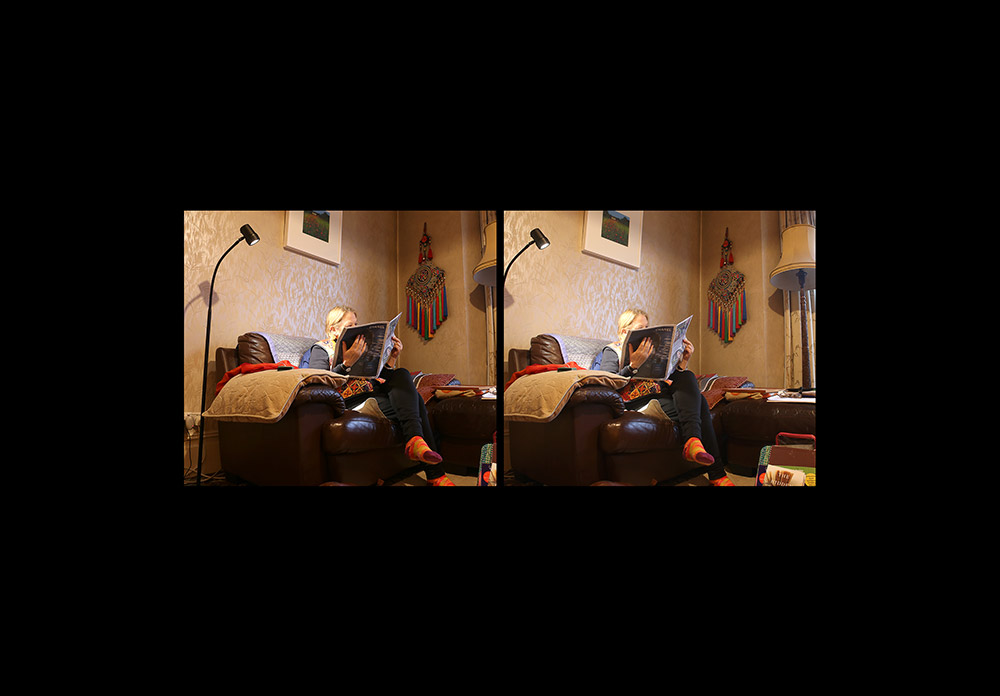
What are your future plans?
My immediate plan is to complete my master’s in Photography at the University of Portsmouth starting in September 2022. I wish to continue collaborating with various organisations / individuals and exhibiting different projects within the public sphere. I have absolutely loved being part of the organisation of a Photographic Art Trail in Southsea, Portsmouth whilst on my degree. I hope to enable more opportunities like this one in the future.
Do you have any advice for others wanting to get into or study photography?
- In the first year of my degree, I was reluctant to call myself an Artist. The tutors and the technicians at the University of Portsmouth guided us to speak more openly and accurately about our respective practices.
- I like finding visual links between my research and the photographic medium, it is apparent in most of my personal work. I also really enjoyed having the possibility to develop multi-disciplinary projects leaning towards the Fine Art genre.
- As a mature student, the degree has enabled me to relearn about myself and nurture the idea that I could call myself an Artist without discarding my previous experiences.
- Studying photography at University has rebooted me and I am now more focused as ever to continue on this journey. After all, what you put in determines greatly what you get out – and you can apply this motto to anything really.
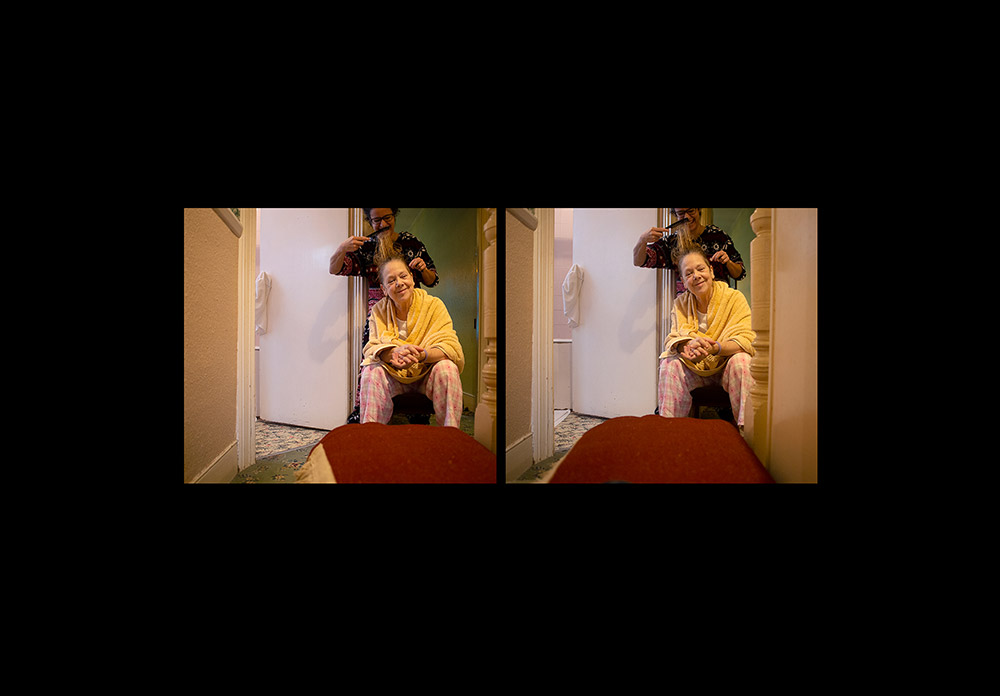
Is there anything else you would like to tell us about yourself or your work?
I am thrilled about the outcome of this project and the feedback I was given. Touch me with your eyes has been featured on Source Photography and PhMuseum websites. I have also recently been contacted by Aspex Gallery in Portsmouth to feature in a group exhibition. I wasn’t expecting this!
Maria Wathen – Class Hexapoda
@mariawathen
Can you tell me about yourself and your project?
I am a wildlife and nature photographer based around the West Sussex and London area.
Whilst growing up and spending time outdoors, I developed a keen interest in wildlife, animals and the outdoors. Picking up a camera a few years ago, I started my photography journey capturing animals and dogs. Away from my work, I am a keen sportswoman and partake in netball as well as competing in Flyball with my dogs around the country and Europe.

My year-long project Class Hexapoda explores the conservation of insects, the increasing decline in their species and highlighting their importance within society. How we view, interact and tolerate insects is another important factor throughout my work. We only tolerate insects due to their small size, so how does our perception change towards them when they’re viewed at a magnified scale? Insects are diverse, abundant, ecologically and culturally important to us, and are suffering declines by our hand.
My outcome is a finished resolution of microscopic images of insects. I used the process of Scanning Electron Microscopy (SEM) to achieve my images which is a type of electron microscope that produces images of biological and non-biological specimens by scanning the surface with a focussed beam of electrons. I focussed on the detailed, fragile structures, unseen to the human eye.
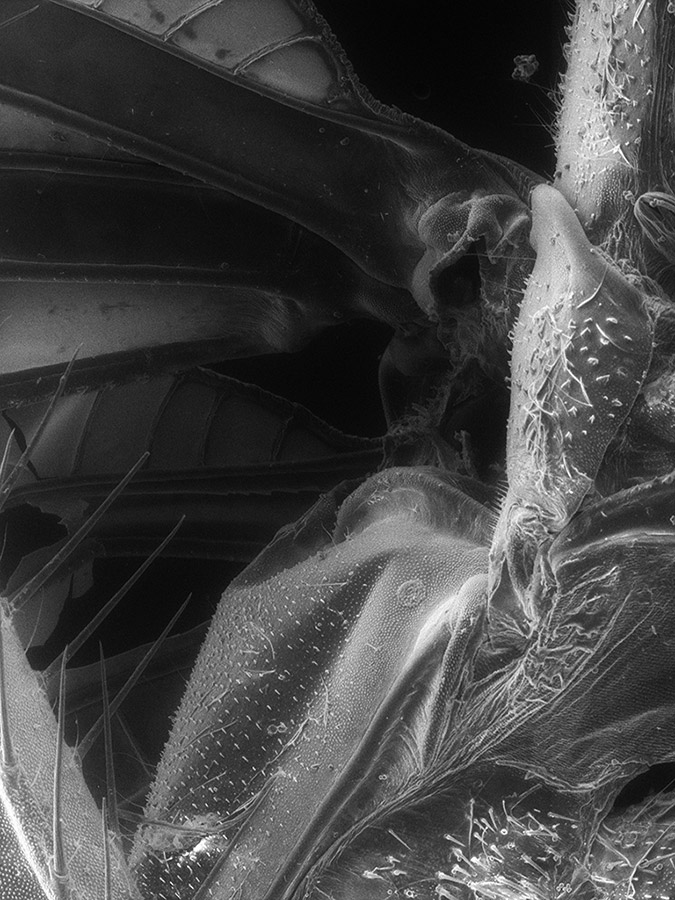
How did you choose which photographs would be included in your show?
Along with this process being a completely new experience for me, I soon realised it was a lot of trial and error. It could take anything up to an hour trying to capture one shot. I spent several sessions down in the labs to capture various interesting and mesmerising images of these beautiful creatures. My aim was for the images to be completely abstract, leaving you unsure what you are initially looking at, so I chose the four strongest images that captured the structures in detail, but also were also unidentifiable. Science was also prominent throughout my series and as a result of this, I ended up displaying my images in lightboxes to resemble x-rays as this also heightened the detail.
What are your future plans?
Whilst pursuing this hobby since 2015 and having now completed three years and university, my aims are to eventually become a travel, nature and wildlife photographer. My current aspirations would be to travel abroad and dedicate a project surrounding conservation and photographing endangered animals as it is a huge passion of mine. I have a few projects in mind that I would like to start and hopefully one day showcase.
Do you have any advice for others wanting to get into or study photography?
- Just get out there and photograph what you enjoy. It can take a lot of time and patience but the more you practice and get yourself out photographing, the better and more enjoyable it becomes.
- If photography is something you see yourself doing, then go for it! We all started somewhere. I thoroughly enjoyed studying photography throughout college and university and would highly recommend it to anyone, looking back on some of my own work I can see the growth from where I first started.

BA Hons Photography at the University of Portsmouth
Find out more about studying the BA (Hons) Photography course at University of Portsmouth here.
Related reading:
University of Gloucestershire students share new perspectives at photojournalism show

